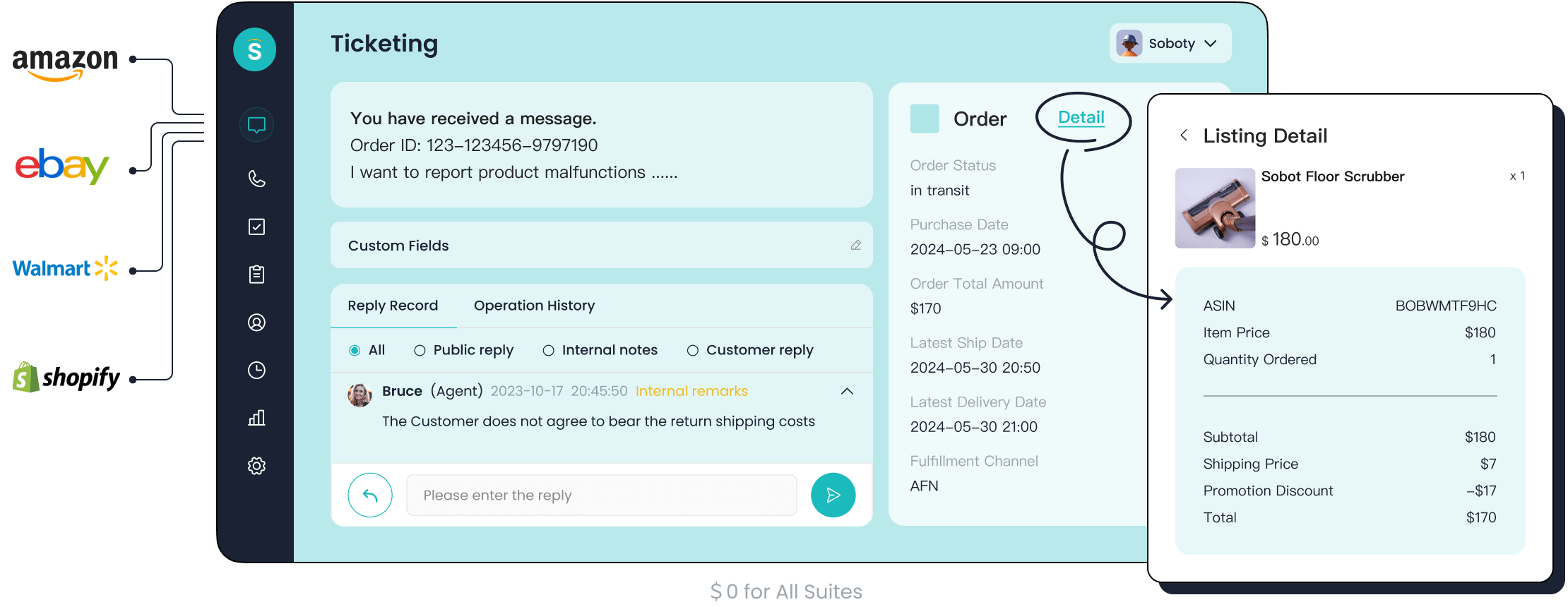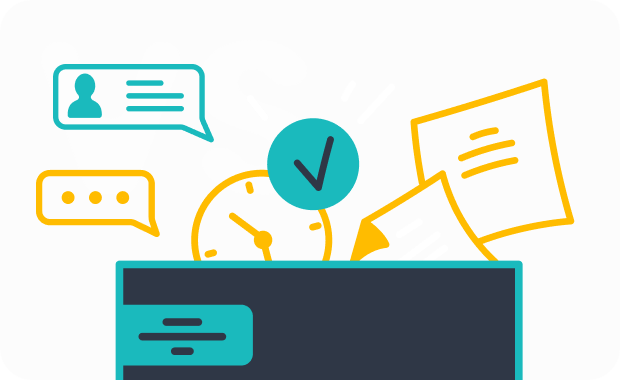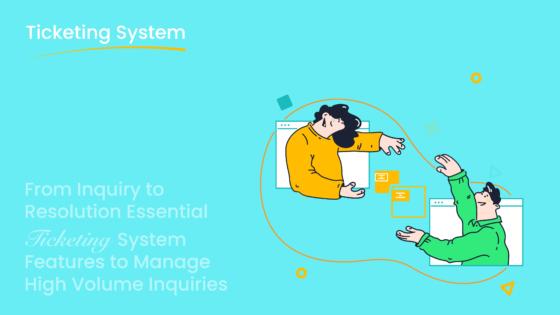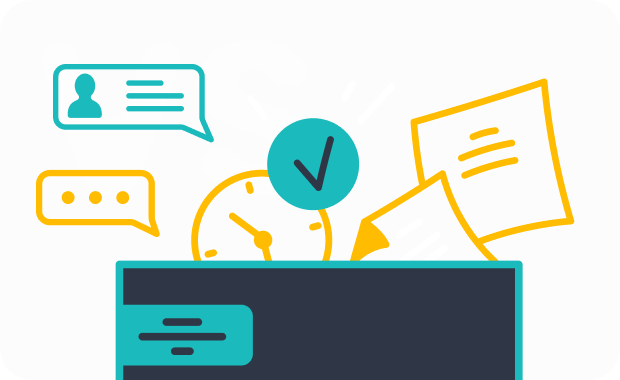Best Practices for Measuring Customer Success Effectively

Measuring customer success is essential for business growth and retention. Companies that track customer success see up to a 91% return on investment over three years. When you boost retention by just 5%, profits can jump by 25-95% (source). A structured customer success process helps you spot issues early, engage customers, and create loyal advocates. Sobot and Sobot AI focus on innovation and customer-centricity, making it easier for you to measure and improve customer success. Take a moment to review your approach—think about how to measure customer success and unlock new opportunities.
Customer Success Defined
What Is Customer Success?
Customer success is more than just helping customers when they have problems. You help your customers reach their goals and get real value from your product or service. Many experts say customer success is a proactive business function that drives growth, retention, and satisfaction. You focus on making sure customers use your product well, see results, and want to stay with your company.
Customer success connects what customers want with what they actually achieve. You guide them from the moment they buy, through onboarding, and as they use your product every day. This approach builds loyalty and keeps satisfaction high.
Some top industry sources describe customer success as a team effort. You manage data, improve processes, train your team, and use smart systems. Your goal is to help customers succeed and keep them coming back.
Why Measure Customer Success?
You need to measure customer success to know if your efforts work. When you track satisfaction and retention, you spot problems early and find ways to improve. Research shows that 86% of happy customers will pay more for a great experience, and 90% will tell others about it. Companies that focus on customer success grow faster and keep more customers (Salesforce).
Measuring customer success helps you understand what your customers need. You can use this information to make better decisions, improve your product, and boost customer satisfaction. Sobot’s all-in-one contact center solutions make it easy to gather feedback and track key metrics, so you always know how your customers feel.
Key Principles
To build a strong customer success function, you need a few key principles:
- Build strong relationships from the start with good onboarding and regular check-ins.
- Always put the customer first by understanding their needs and delivering value.
- Personalize training and support to help customers get the most out of your product.
- Create feedback loops so you can listen and respond to customer concerns.
- Use data and analytics to spot trends and act quickly.
- Align your team and tools to support customer experience and satisfaction.
- Set clear goals and measure progress with KPIs like CSAT, retention, and NPS.
Tip: Companies that follow these principles see higher customer retention, better satisfaction, and more growth.
Sobot’s omnichannel solutions help you connect with customers at every touchpoint, making it easier to deliver great experiences and measure success.
How to Measure Customer Success

Essential Metrics
If you want to know how to measure customer success, you need to start with the right numbers. Top-performing companies use a mix of customer success metrics to see what’s working and what needs attention. These numbers help you spot trends, fix problems, and keep your customers happy.
Here are some key metrics for measuring customer success:
- Customer Retention Rate: Shows how many customers stick with you over time.
- Net Promoter Score (NPS): Tells you if customers would recommend your business.
- Customer Lifetime Value (CLV): Estimates how much revenue a customer brings during their time with you.
- Customer Churn Rate: Measures how many customers leave.
- Monthly Recurring Revenue (MRR): Tracks steady income from subscriptions.
- Customer Health Score: Combines different signals to show if a customer is happy or at risk.
- Free-to-Paid Conversion: Shows how many users upgrade from free to paid plans.
- Onboarding Success: Tracks if new customers get value quickly.
- Renewals and Upsells: Measures how often customers renew or buy more.
Tip: You can use a customer success metrics dashboard to track these numbers in real time. This helps you see the big picture and act fast.
Here’s a quick look at some of these metrics:
| Metric Name | Description and Importance |
|---|---|
| Customer Churn Rate | Percentage of customers who stop using your product. |
| Net Promoter Score (NPS) | Measures loyalty and the chance customers will recommend you. |
| Customer Lifetime Value (CLV) | Total revenue from a customer over their relationship with you. |
| Monthly Recurring Revenue (MRR) | Predictable monthly income, great for planning. |
| Customer Retention Rate | Shows how many customers stay with you. |
| Customer Health Score | Mixes usage and support data to spot at-risk customers. |
| Free-to-Paid Conversion | Tracks upgrades from free to paid. |
| Onboarding Success | Checks if new users get value early. |
| Renewals and Upsells | Looks at repeat business and extra sales. |
| Customer Success Plans | Sets goals and milestones for each customer. |
When you use a customer success metrics dashboard, you can see all these numbers in one place. Sobot’s dashboard makes it easy to track, compare, and share your results with your team.
Customer Health Scores
Customer health scores help you see how your customers feel about your product. If you want to know how to measure customer success, you need to look at these scores often. They mix different signals, like how much a customer uses your product, if they pay on time, and how often they talk to your support team.
You can use color codes (like green, yellow, red), letter grades, or percentages to show health scores. High scores mean customers are happy and likely to stay. Low scores warn you that a customer might leave soon.
Here’s what goes into a good customer health score:
- Product usage: Are customers using your product often?
- Financial signals: Do they pay on time or upgrade their plan?
- Engagement: Do they join webinars or answer surveys?
- Support interactions: Do they finish onboarding or ask for help?
- Relationship: Do they respond to check-ins or give feedback?
Companies that update health scores every week or in real time can spot problems early. This helps you prevent up to 50% of customer churn. When you use a customer success metrics dashboard, you can see health scores for all your customers and act fast.
Sobot’s platform lets you track health scores by combining data from every channel—chat, email, phone, and more. You can set up alerts for at-risk customers and create action plans to boost satisfaction.
Note: Companies with strong health score systems see up to 18% higher net revenue retention.
Quantitative and Qualitative Feedback
Numbers tell you a lot, but stories matter too. If you want to master how to measure customer success, you need both quantitative and qualitative feedback. Quantitative feedback uses numbers, like customer satisfaction score (CSAT) or NPS. Qualitative feedback comes from open-ended questions, interviews, and support tickets.
Here’s how you can collect and use both types:
- Send surveys with rating scales for quick, clear answers.
- Ask open-ended questions to hear what customers really think.
- Hold interviews or focus groups for deeper insights.
- Watch social media and review support tickets for trends.
- Sort feedback into themes and look for patterns.
- Share what you learn with your team and act on it.
A customer success metrics dashboard helps you organize all this feedback. You can see trends, spot issues, and track how changes improve satisfaction. Sobot’s omnichannel solution pulls feedback from every channel into one place, making it easy to listen and respond.
Pro Tip: Combining numbers and stories gives you a full view of customer satisfaction. You’ll know what’s working and why.
If you want to improve customer success, keep your feedback loop strong. Use your dashboard to track key metrics, health scores, and feedback. This way, you can measure customer success, boost satisfaction, and grow your business.
Tools for Customer Success Measurement


Sobot Ticketing System
You need the right tools to measure customer success. The Sobot Ticketing System gives you a single place to manage all your customer conversations. You can connect email, chat, social media, and voicemail, so you never miss a message. The system uses smart triggers to send each ticket to the best agent. This means your team solves problems faster and keeps customers happy.
Here’s what makes Sobot’s ticketing system stand out:
- Automated ticket assignment boosts first call resolution rates.
- Internal chat helps agents work together and solve issues quickly.
- All channels come together in one platform, so nothing gets lost.
- Advanced analytics show you response times, resolution rates, and customer satisfaction.
- SLA management and smart notifications keep your team on track.
With these features, you can see a 95% customer satisfaction rate and an 85% problem resolution rate. You get clear insights to improve your customer success process every day.
Omnichannel Solutions
Omnichannel solutions help you track customer success across every touchpoint. Sobot’s platform brings together all your customer data, so you can see the full journey. You can measure key metrics like CSAT, NPS, and retention rate in one place.
| KPI / Feature | Role in Customer Success Measurement |
|---|---|
| Customer Satisfaction Score (CSAT) | Shows how happy your customers are and where you can improve. |
| Net Promoter Score (NPS) | Tells you if customers will recommend your business. |
| Customer Retention Rate (CRR) | Tracks how many customers stay with you over time. |
| Customer Lifetime Value (CLV) | Measures the long-term value of each customer. |
| Unified Engagement Platform | Combines all data for real-time insights and better decisions. |
When you use Sobot’s omnichannel solution, you get a 360-degree view of your customers. This helps you spot trends, personalize support, and keep improving your customer success strategy.
Data Analytics Platforms
Data analytics platforms make it easy to track and understand customer success metrics. You can use dashboards to see real-time data, create reports, and find patterns. The best platforms let you:
- Bring all your data together for a clear picture.
- Run A/B tests to see what works best.
- Segment customers for more personal support.
- Use AI to predict customer needs and prevent churn.
- Visualize key metrics like retention, engagement, and revenue.
Sobot’s analytics tools help you act fast on insights. You can update your process, measure the impact, and keep your team focused on customer success.
Tip: Choose tools that are easy to use and bring all your data into one place. This makes it simple to measure, understand, and improve customer success.
Interpreting and Acting on Data
Analyzing Trends
You can spot patterns in customer success by looking at your data over time. This helps you see what works and what needs to change. Here’s how you can analyze trends:
- Set up automated tracking with tools like Sobot’s analytics dashboard. This lets you watch key metrics such as customer health scores, retention rates, and satisfaction.
- Build playbooks for onboarding and common challenges. These guides help your team deliver a consistent experience.
- Use health scores and churn prediction to catch early warning signs. This helps with preventing churn and boosts customer retention.
- Track KPIs like Net Promoter Score, active users, and ticket resolution times.
- Map the customer journey and segment your audience. This way, you can tailor your approach for each group.
- Encourage teamwork between support, account management, and customer success teams.
- Keep feedback loops open. Use insights to find new ways to increase customer loyalty and satisfaction.
- Stay flexible. Update your strategies as customer needs and markets change.
Tip: Sobot’s omnichannel platform makes it easy to gather and review all your data in one place, so you never miss a trend.
Setting Benchmarks
Benchmarks help you measure how well you’re doing in customer success. You can set goals and see if you’re ahead or need to improve. Here’s how to set effective benchmarks:
- Pick key metrics like Net Promoter Score, customer satisfaction score, churn rate, and customer health score.
- Collect past data to set a baseline for each metric.
- Compare your numbers to industry standards. This shows where you stand.
- Set realistic goals that match your business strategy.
- Use your benchmarks to focus on areas like faster support or better onboarding.
- Check your progress often and adjust your goals as needed.
- Watch for new trends in customer retention and satisfaction. This keeps you competitive.
- Share your results with your team and stakeholders to show your progress.
Note: Many companies aim for a customer satisfaction score above 90% and a Net Promoter Score of 70 or higher.
Driving Continuous Improvement
Continuous improvement means you always look for ways to get better at customer success. You need leadership support, clear goals, and strong communication. Real-world examples show that when companies focus on improvement, they see big results. For example, a retail chain increased employee satisfaction by 28% in six months by making work schedules more flexible. In hospitality, better team communication led to 93% of employees feeling more connected.
You can use feedback loops and case studies to learn what works. Sobot’s analytics and ticketing system help you track changes and measure their impact. When you act on data, you boost customer loyalty, retention, and satisfaction. Over time, this leads to higher profits and happier customers.
Embedding Measurement in the Customer Success Process
Customer Journey Touchpoints
You want to measure customer success at every step of the customer journey. Experts say you should track each touchpoint, from the first time a customer hears about your brand to when they become loyal fans. This helps you spot weak spots, improve the customer experience, and build loyalty. Here’s what you should focus on:
- Track conversion rates, CSAT, NPS, churn rates, and customer lifetime value.
- Use tools like Sobot’s omnichannel platform to bring all your data together. This lets you see how customers move through each stage.
- Map out the journey and score each part based on combined metrics.
- Don’t just look at the end result. Every interaction shapes customer relationships and engagement.
OPPO, a global smart device leader, used Sobot’s solutions to connect all their channels. They measured every touchpoint, which helped them boost their chatbot resolution rate to 83% and increase repurchase rates by 57%. When you measure each step, you get a full view of the customer success process.
Feedback Loops
Feedback loops are key to a strong customer success process. You collect customer feedback, analyze it, act on what you learn, and then check back with customers. This cycle helps you see if your changes really improve customer success metrics like CSAT, NPS, and retention. When you close the loop, you show customers you care about their input.
Sobot’s omnichannel solution makes it easy to gather feedback from chat, email, and social media. AI and analytics help you spot trends and respond faster. This keeps your customer success team focused on building strong customer relationships and improving the customer experience.
Team Collaboration
Your customer success team can’t work alone. You need Sales, Marketing, and Support to share goals and data. Here’s how you can make collaboration work:
- Set shared SMART KPIs for all teams.
- Map the customer journey together and define clear roles.
- Use Sobot’s unified workspace so everyone sees the same data.
- Hold regular meetings to review feedback and results.
When your customer success team and support team work side by side, you prevent burnout and boost accountability. Splitting roles into proactive (customer success) and reactive (support) helps everyone focus. This teamwork leads to better customer engagement, higher retention, and a stronger customer experience.
Building a Customer Success Strategy
Aligning with Business Goals
You want your customer success team to help your business grow. To do this, you need to connect your customer success strategy with your company’s main goals. Here’s how you can make that happen:
- Set clear, measurable goals for your customer success team that match your company’s targets for revenue, retention, and satisfaction.
- Track progress using customer success metrics like customer lifetime value, renewal rate, and net retention.
- Use playbooks and regular training so your team always knows what to do.
- Focus on proactive onboarding and regular check-ins to build loyalty.
- Collect feedback from customers and use it to improve your services.
- Get support from leaders and other teams to keep everyone moving in the same direction.
When you align your customer success strategy with business goals, you help your company grow faster and keep more customers. Sobot’s unified platform makes it easy to track these goals and measure your team’s impact.
Personalization and Proactive Engagement
Personalization and proactive engagement help your customer success team stand out. You can use automated alerts to spot when a customer’s engagement drops, then reach out before problems grow. Personalized onboarding and regular check-ins make customers feel valued and supported.
Here’s what works best:
- Set up alerts for changes in customer behavior, like a drop in logins.
- Offer personalized walkthroughs and milestone check-ins.
- Use predictive analytics to find customers at risk of leaving.
- Build customer communities and share self-service resources.
These strategies can boost retention rates by 15-20% and increase upsell rates by 20%. Sobot’s omnichannel solution helps you deliver personalized support and track customer engagement across every channel.
| Metric | Why It Matters |
|---|---|
| CSAT | Shows how happy your customers are with your service. |
| Product Adoption Rates | Tracks how many customers use your product features. |
| NPS | Measures if customers will recommend your business. |
| Retention Rates | Shows how many customers stay with you over time. |
Measuring Team Performance
You need to know how well your customer success team is doing. Use customer success metrics like churn rate, NPS, and customer lifetime value to measure results. Check how quickly your team solves problems and how often customers renew or upgrade.
A strong customer success culture means your team works together, shares feedback, and always looks for ways to improve. Sobot’s analytics tools let you see team performance in real time, so you can celebrate wins and fix issues fast. When your customer success manager leads with clear goals and regular reviews, your whole team stays focused and motivated.
Tip: Review your customer success strategies often. Stay flexible and ready to adapt as your customers’ needs change.
You can boost customer success by tracking key metrics like CSAT and NPS, acting on feedback, and offering self-service options. Sobot’s AI-powered platform brings all your channels together, making it easy to spot trends and improve customer retention. When you use data to guide your team, you build customer loyalty and drive long-term growth. Want to learn more? Check out guides from the Consortium for Service Innovation or reach out to Sobot’s team for expert help.
FAQ
What is the most important metric for measuring customer success?
You should focus on customer retention rate. Studies show that a 5% increase in retention can boost profits by up to 95% (Bain & Company). Sobot’s dashboard helps you track this and other customer success metrics in real time.
How does Sobot help improve customer success?
Sobot brings all your customer conversations into one place. You can use its ticketing system to automate tasks, track customer success metrics, and respond faster. Many brands, like OPPO, have seen higher satisfaction and retention after using Sobot’s solutions.
Why should I measure customer success at every touchpoint?
Every interaction shapes the customer experience. If you measure customer success at each step, you spot problems early and keep customers happy. Sobot’s omnichannel platform lets you see the full journey, so you never miss a chance to improve.
Can I use Sobot to collect both quantitative and qualitative feedback?
Yes! Sobot’s omnichannel solution gathers feedback from chat, email, and social media. You can track customer success with numbers like CSAT and NPS, and also read real comments to understand what customers really think.
How often should I review my customer success strategy?
You should check your customer success strategy at least every quarter. Regular reviews help you spot trends, adjust goals, and keep your team focused. Sobot’s analytics tools make it easy to see what’s working and where you can improve.
Tip: Customer success is not a one-time project. Keep measuring, learning, and improving for the best results!
See Also
Top Strategies To Enhance Customer Satisfaction In Live Chat
Effective Quality Management Techniques For Call Centers
Improving Call Center Results Through Performance Monitoring
